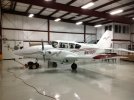Just started flying and planning on getting my ppl soon. Looking for my first plane later this year. I’d like to stay under $250k. And I’d probably have a partner.
I figure that most of my flight time will be with my wife and 3 small kids flying about 400 miles from Southern California to southern Utah. Maybe eventually up to northern Utah.
I’m leaning toward a piper Lance turbo.
What do you guys think of this as a first plane for someone with <100 hours?
I figure that most of my flight time will be with my wife and 3 small kids flying about 400 miles from Southern California to southern Utah. Maybe eventually up to northern Utah.
I’m leaning toward a piper Lance turbo.
What do you guys think of this as a first plane for someone with <100 hours?

